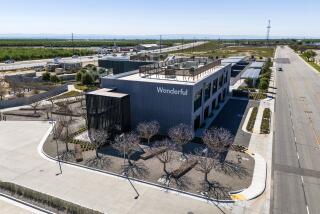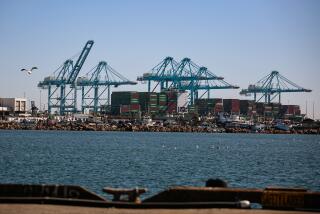Forklifts Can Bring Trouble to the Inexperienced : Safety: No piece of machinery is as dangerous to immigrant laborers, some experts believe.
- Share via
The forklift was traveling through the factory parking lot at what Isauro Castro assumed was a safe speed when he spun the steering wheel to make a turn. Without warning, the vehicle pitched violently onto its side, trapping Castro and crushing his arm.
His supervisors and other workers at Talco Plastics Inc. in Santa Fe Springs insisted that Castro had been going too fast when the accident occurred in October, 1989. They may have been right.
Having been raised in rural Mexico, the 21-year-old Castro was not familiar with industrial vehicles, according to his attorney, Robert Kivo. He didn’t even have a driver’s license.
An estimated 1 million forklifts are in commercial use in the United States. Probably no piece of machinery is as common in factories--or as dangerous to immigrant laborers, some safety experts believe.
“They make these things so user-friendly that anybody can get on a forklift, piddle with the levers and think they know what they’re doing,” said David MacCollum, former president of the American Society of Safety Engineers. “But you get some of these guys who don’t have any training to speak of, who may not understand the instructions let alone the language, and you’re asking for trouble.”
More than 10,000 manufacturing workers in California were injured in forklift accidents between 1980 and 1991, records show, although the annual number of injuries generally has declined in recent years. In 1991, 844 injuries were reported statewide, according to the California Department of Industrial Relations.
Between 1991 and 1992, at least 18 workers were seriously injured in forklift accidents at Los Angeles County manufacturing facilities, state records show. Most involved workers being struck by passing forklifts or having cargo fall on them.
In the county, coroner’s records show, at least six fatal accidents have involved forklifts during the past five years. Four of the victims were Latinos.
Jose Zuniga, 31, was standing on a wooden pallet being raised by a forklift at a Los Angeles warehouse in September, 1992, when he lost his balance and fell, landing on his head.
Adrian Sanchez, 21, died at a container company in Wilmington in April, 1989, when a 20-foot-long, 2 1/2-ton steel box slipped off of a forklift, crushing him.
Antonio Villalobos, 46, died at a cast-iron foundry in South Gate in February, 1989, when the raised forks of the forklift he was trying to fix dropped on him.
Noelo Figueroa, 31, was crushed to death in January, 1989, while attempting to adjust his forklift’s load. The vehicle rolled backward, pinning Figueroa against a wall.
“A forklift is an incredible piece of machinery--it can do miracles--but it’s really a teeter-totter on wheels,” said Hy Mayerson, a Pennsylvania attorney who has filed more than 30 lawsuits against forklift manufacturers on behalf of injured workers. “It requires a sophisticated operator. Otherwise, it cannot be operated safely.”
Mayerson and other critics contend that newer forklifts are particularly unstable and dangerous because they generally have narrower wheelbases to fit through the narrow aisles of today’s factories and warehouses. These vehicles, they say, are more prone to roll--especially when cornering.
Federal regulations state that “only trained and authorized operators shall be permitted to operate a powered industrial truck” and that “methods shall be devised to train operators in the safe operation of powered industrial trucks.” The regulation, however, fails to define what type and how much training is considered adequate.
California’s labor regulations are similarly vague, and the state’s motor vehicle code requires no special certification--or even a driver’s license--to operate a forklift.
A mid-1980s study of forklift accidents by the National Institute of Occupational Safety and Health found that up to 70% could have been avoided with better training. Nationally, NIOSH found, 34,000 forklift injuries in 1985 required emergency room treatment. Nearly one-quarter involved forklift operators running over the feet of co-workers.
An official of the Industrial Truck Assn., which represents 20 of the nation’s largest forklift manufacturers, conceded that few operators are adequately trained.
“What we found was that most people did some training, but not very much,” said the official, who asked not to be identified. “In a large number of cases, no training was done. It was more like, ‘Hey, get on the truck and learn.’ ”
Concerned with driver safety and liability, the association has introduced a resolution in Congress asking the U.S. Occupational Safety and Health Administration to draft regulations requiring specific training standards for forklift operators.
OSHA, however, does not regulate the workplace in California. That responsibility is left to the state’s safety and health agency, Cal/OSHA.
Cal/OSHA officials said nothing conclusive suggests that Spanish-speaking forklift operators face a heightened risk under existing law. They said they were unaware of any pending effort to strengthen or otherwise modify forklift regulations in California.
“There are regulations already,” said Richard Stephens, a spokesman for the state’s Department of Industrial Relations.
More to Read
Sign up for Essential California
The most important California stories and recommendations in your inbox every morning.
You may occasionally receive promotional content from the Los Angeles Times.













